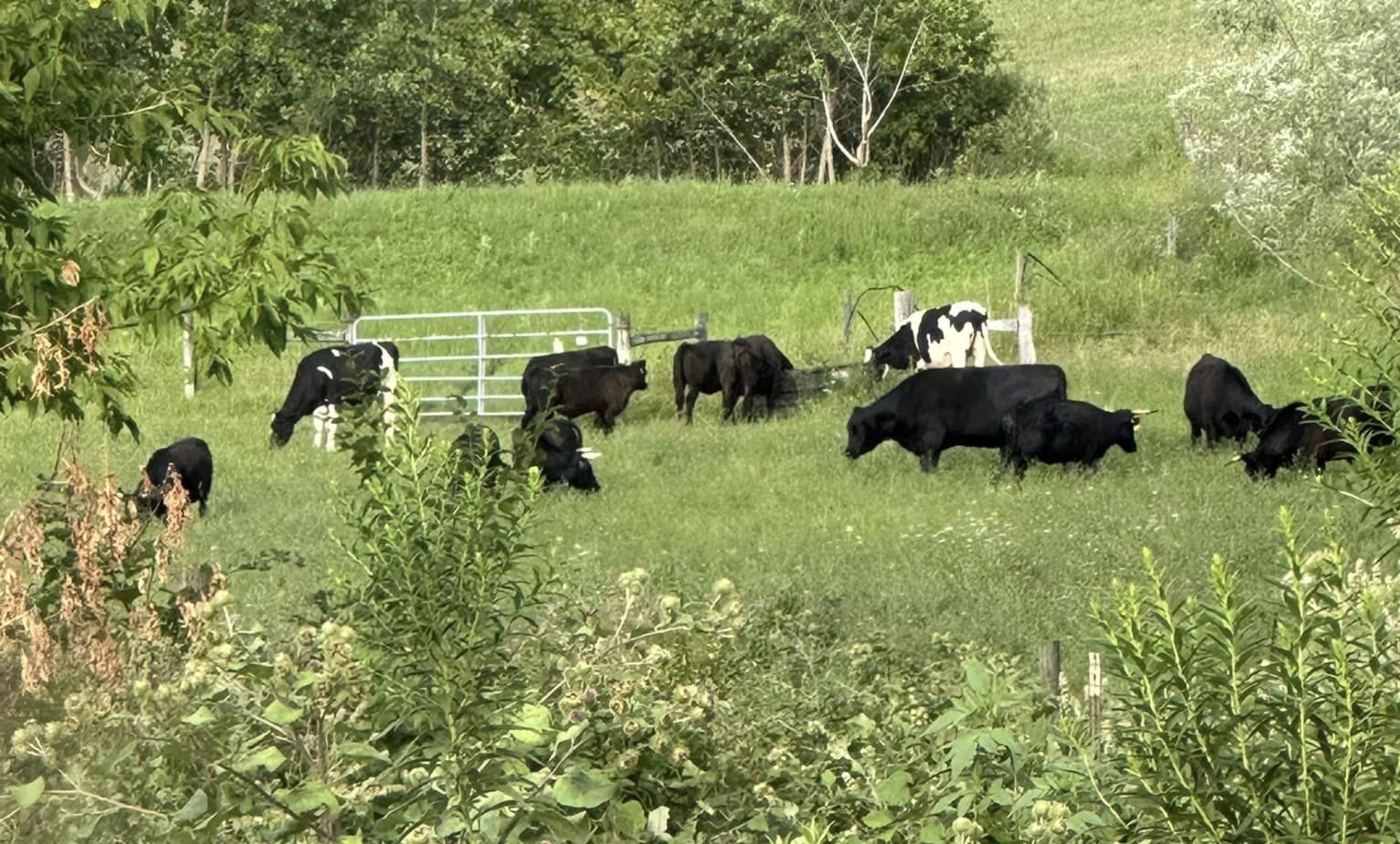(Note: while we grow red Russian kale, we do not always have it available to sell.)
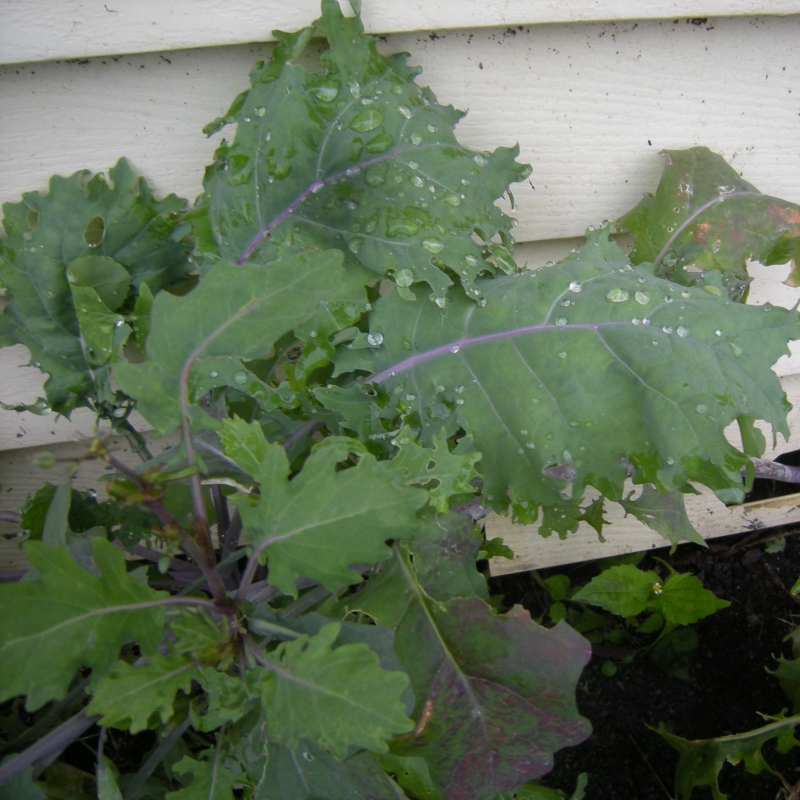
Some red Russian kale seed spilled on the driveway several years ago. The plant has come back and produced nice foliage. Note how the leaves are water repellent – the water beads on the leaves.
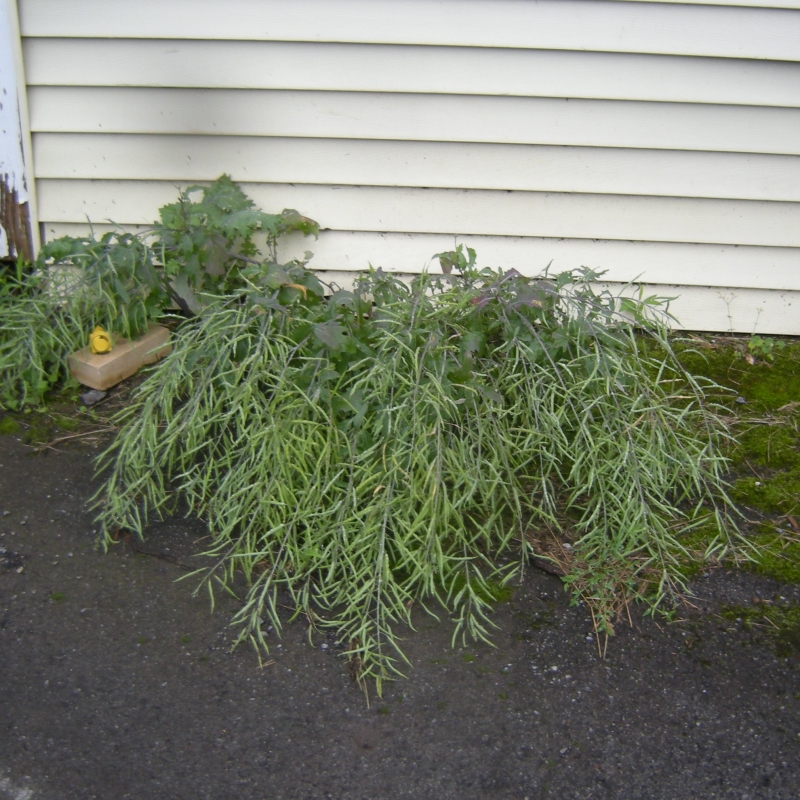
This year the kale flowered and now has a large supply of these lovely seed pods. Probably we will let them dry and save them for seed for the coming year.
Some interesting things to note:
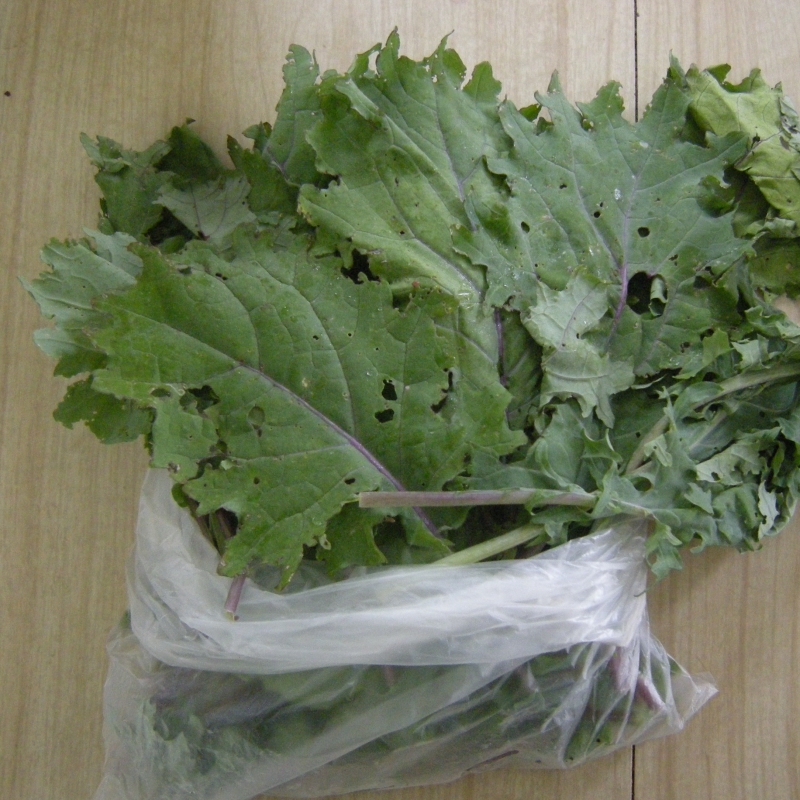
We think of kale as a small leaf with thin stems, something that we could try to eat raw and that would certainly cook up quickly either sauteed or boiled.
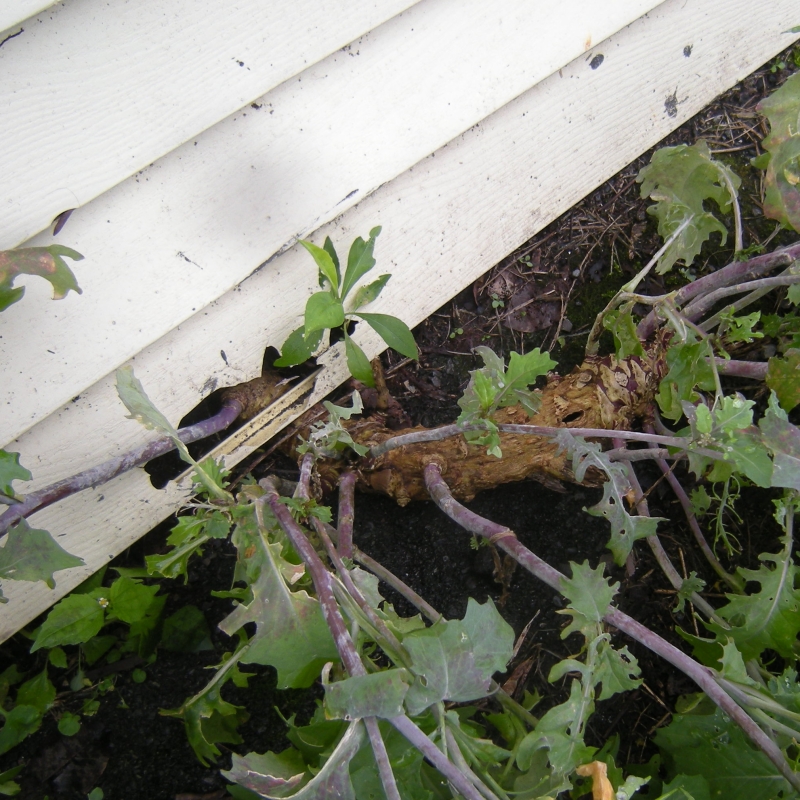
But look at the stout woody stem that is at the base of the seed podded plant. Quite stout and woody!
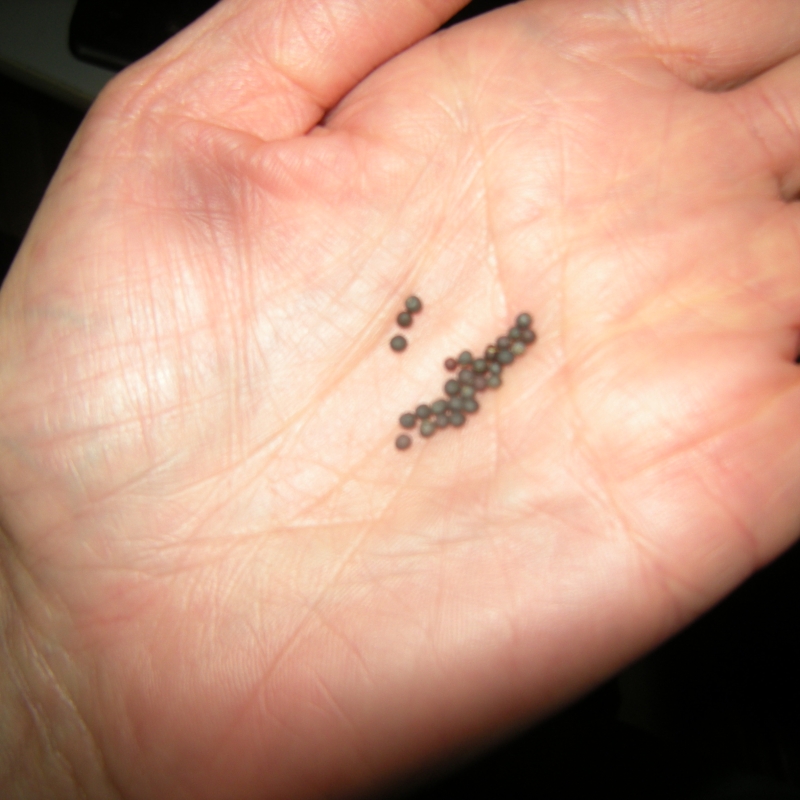
The seeds are also quite small.
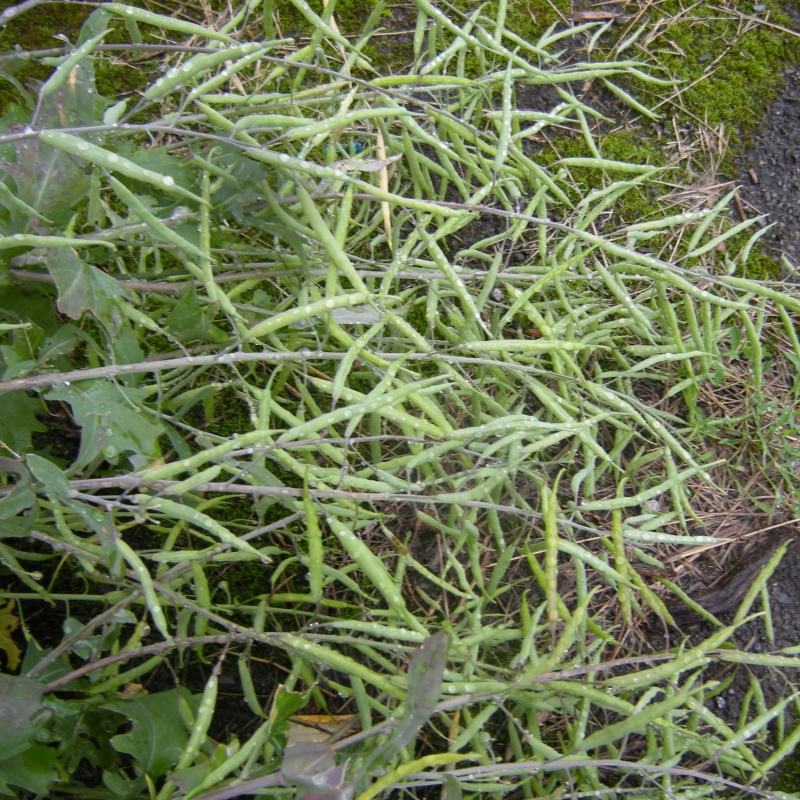
But one of those generated this plant that has lots of seed pods each with probably 5-12 seeds in it. Quite the plant!
Biennial, annual, and perennial differences:
- A biennial is a plant that flowers and makes seeds in the 2nd year, not the first year. The brassicas, like broccoli or cabbage, or the beets, like Swiss chard or early wonder tall top beets, are biennials.
- An annual flowers and makes seeds in the first year. Spinach or squashes are annuals.
- Self-sowing annuals also distribute the seeds which then come up the next year even though they weren’t planted on purpose. Cilantro and dillweed are like this.
- A perennial comes up every year. It may also make seeds, but the mother plant comes up whether it goes to seed or not. Rhubarb and asparagus are perennials.
